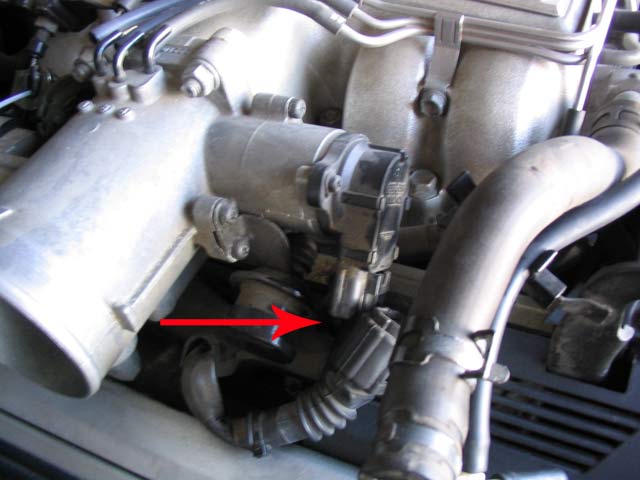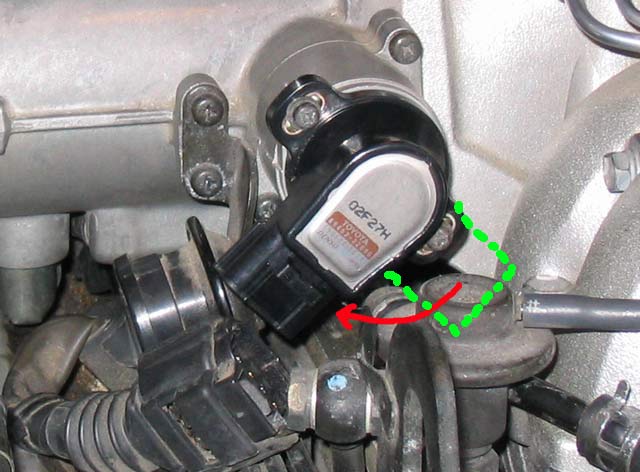How to Replace & Adjust the Throttle Position Sensor
1990-1994 Lexus LS400
Replacing the TPS is easy, but adjusting it is a little tricky. I'll show you how to adjust it by the book and I'll explain my method as well.
Tools Needed:
- Screwdrivers
- Socket wrench and sockets
- Thickness gauge (optional)
Parts Needed:
- Throttle position sensor, part #89452-22090

1) Unplug the connector from the TPS.

2) Remove these 3 10mm bolts and then remove the throttle body cover.

3) Remove the 2 screws and then the TPS. The two metal prongs under the TPS move when the throttle is pressed.

Old (part #89452-12050) and New (part #89452-22090, about $74. I added the red dashes in this pic so you can visualize where the metal prongs from the last pic line up with the sensor.

4) Install the new TPS. Start with the bottom of the sensor positioned where the green outline is in this pic, then rotate the sensor clockwise until you can install the 2 screws. Leave the screws loose so you can still rotate the sensor during the adjustment.
Adjustment of the TPS, The Official Method

5) Insert a 0.40mm thickness gauge between the throttle stop screw and lever.

6) Connect an ohmmeter to the IDL and E2 terminals of the TPS. Unless the throttle body is removed it's pretty much impossible to do this using the standard ohmmeter probes. There's just no room and plus you need to be able to rotate the TPS. It could probably be done using some very tiny clips.
7) Turn the TPS clockwise until resistance on the ohmmeter is gone and then tighten the two screws.
8) Now use your ohmmeter to check for continuity between terminals IDL and E2 with the 0.40mm thickness gauge still inserted between the throttle stop screw and lever. There should be continuity.
9) Now insert a 0.85mm thickness gauge between the throttle stop screw and lever. There should not be any continuity.
10) Replace the throttle body cover, plug the connector back into the TPS, and go for a test drive.
And now for the Lexls.com method...
My method relies on knowing the correct idle speed and doing a little trial and error. It may not be as elegant as the official method, but it does work.
- When the TPS is turned as far clockwise as it will go the idle speed will be at its highest.
- When the TPS is turned as far counter-clockwise as it will go the idle speed will be at its lowest.
- Normal idle speed is 650 RPM, plus or minus 50 RPM.
So by turning the TPS clockwise, which puts more tension on the sensor, the idle speed is raised. It's the same as when you put your foot on the gas and the throttle opens, doing this puts tension on the TPS. Since the sensor doesn't rotate much you can tell that small movements yield big changes in the idle speed. The range between highest and lowest settings on my LS was about 600-1300 RPM. My first test drive the sensor was set too low and it caused very jumpy highway performance. I then adjusted it a little higher and it was much better. Basically I fine-tuned the TPS until my idle was about 650 RPM and it drove smooth, both on the highway and in the city. Since it only takes a few seconds and a screwdriver to adjust the TPS doing it this way is easier.
If you found this information useful please support the site by clicking the button below and making a donation. Thank you.
